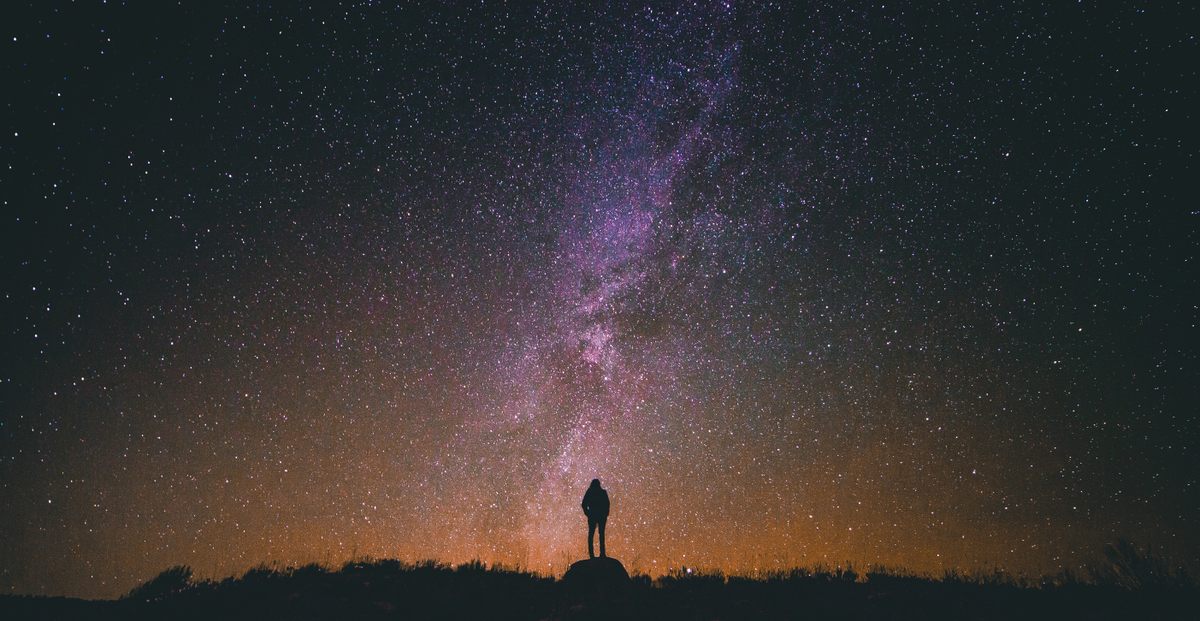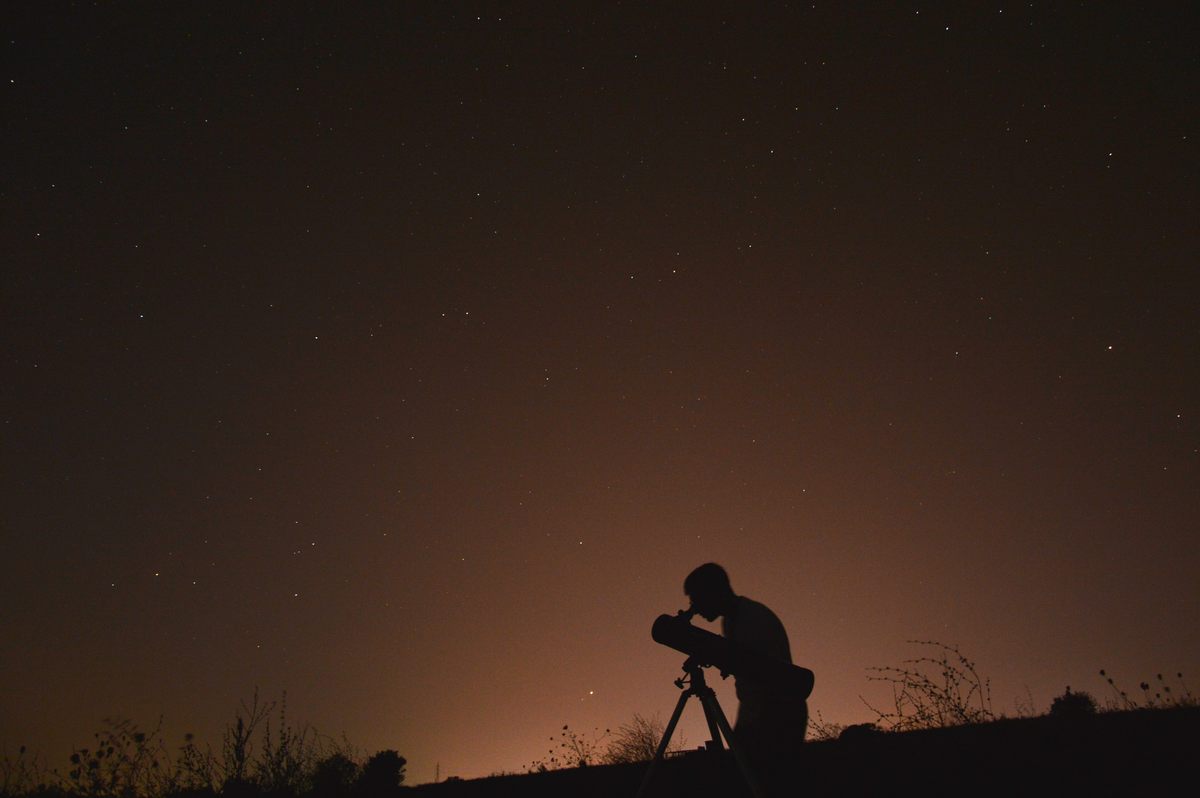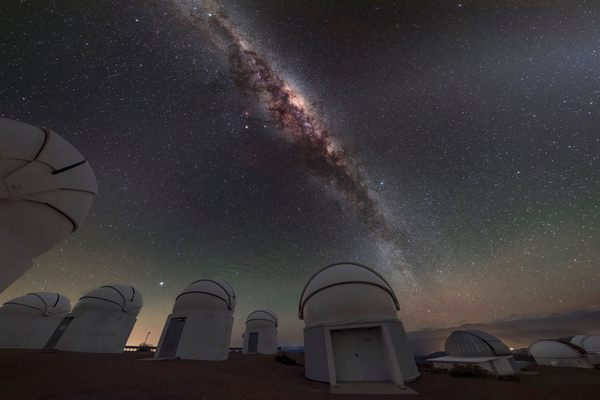A Cosmos of Contemplation Awaits the Mindful Stargazer
The night sky offers a path to both scientific understanding and being present in the universe.
Atlas Obscura’s Wondersky columnist Rebecca Boyle is an award-winning science journalist and author of the upcoming Our Moon: How Earth’s Celestial Companion Transformed the Planet, Guided Evolution, and Made Us Who We Are (January 2024, Random House). Throughout the summer, she’ll be sharing the stories and secrets of our wondrous night sky.
A long time ago, when humans lived in large communal groups, following big game and taking shelter in caves, we weren’t sure what the stars were. But the stars mattered a great deal all the same. The earliest human art, painted on cave walls around the world, depicts both animals and objects in the sky, and often the seasonal connections between them.
We used the stars and the Moon to keep track of time, to track animal migrations and reproduction, and eventually to plan for sowing and harvests and the celebrations we held around those events. We told stories about them, which transmogrified over time into some of the greatest myths we have ever spun.
Today, we have largely lost our temporal and narrative connections to the cosmos. But the night sky still holds a link to our ancestral past. And seeking this connection can be a form of meditation, bringing you mindful awareness. This is one of the best things about stargazing, to my mind.
I happen to have two friends who have published books about this very thing, to help you connect to the cosmos in a way that might make you feel more present on this planet, in this solar system, in this galaxy, in this universe.
“When you’re focusing on the stars, you’re not scrolling through social media, zoning out in front of the TV, or staring at your out-of-control inbox,” write Sarah Scoles and her coauthor Christopher G. De Pree in Astronomical Mindfulness: Your Cosmic Guide to Reconnecting with the Sun, Moon, Stars, and Planets.

Without realizing it, perhaps, you slow down. You feel calm. You become more aware of the sounds of the night, of yourself, of your breath, of the slow turning of the Earth. This is an excellent path toward mindfulness.
I have never thought I meditate “well,” if that’s even a thing; I know it’s not a competition, but sometimes it feels like one more thing I don’t enjoy even though I know it’s good for me. It’s one more thing in the Peloton app that I haven’t done in too long. But as my friend Swapna Krishna points out in her new book, there is no “winning” at meditation, and no right or wrong way to do it.
“It just is. When you let go of expectations, meditation becomes comforting. A retreat from the world,” she writes in Stargazing: Contemplate the Cosmos to Find Inner Peace.
Krishna, Scoles, and I are all professional space writers, which means that we spend a lot of time thinking about how to tell people what they’re seeing, whether it is a full Moon or the newest images from the James Webb Space Telescope. I think it’s fair to say that we all feel immense satisfaction when we’re able not only to explain what is physically happening, but also to imbue those facts with the pure wonder we each feel under the stars. Isn’t it fun to try and understand? And isn’t it wondrous to realize that you cannot, in fact, fully understand?
The Buddhist monk and teacher Thich Nhat Hanh, who died in 2022, once advised that when we wash the dishes, we remain mindful that we are washing the dishes. Do not focus on making tea later with that clean kitchenware; focus on washing the dishes for the sake of washing the dishes, and you will be alive to that moment. Scoles and De Pree advise something similar. When you observe the universe, that should be what you are doing.
“When you’re looking at the Moon, say to yourself, ‘I am looking at the Moon,’ even though it seems obvious. Be present in that magnificent moment,” Scoles and De Pree write.

Both books do an excellent job of walking you through what to see in the sky, why those things matter, and how you might feel differently after seeing them. And both offer a helpful, meditative way to think about stargazing. Along with observations related to the universe, Scoles and De Pree’s book offers exercises you can use to practice mindfulness. Krishna’s book details what you’ll see in the Northern Hemisphere’s night sky and is designed to spark a new stargazing practice—the way we might describe a yoga practice, or a meditation practice.
“Meditative stargazing is about focusing on what you can see, not worrying about what you can’t,” Krishna writes. I think this is a good reminder for beginners, as well as people who have been looking at the night sky for as long as they can remember, like me.
Krishna told me that, while writing her book, one of her favorite things she learned about was the illusion of absence. Inca astronomers, for instance, imagined constellations not the way modern westerners see them, as connecting dots, but instead as the spaces between the stars. “They imagined so much in what we perceive as dark, empty areas of the sky,” she said. But today, whenever astronomers point a powerful telescope at a very dark spot of the sky, they find much more than they ever imagined.
For those of us who began looking to the stars to understand them scientifically, stargazing can offer much more than we ever imagined, too. I may not intend to be mindful or to meditate when I look at the night sky, but the result is the same. I find wonder and peace, perhaps the same peace experienced by humans millennia before me.
Is there something you’d like to know about our brilliant night sky? Share your stargazing questions with us and you may see them answered in a future Wondersky column!










Follow us on Twitter to get the latest on the world's hidden wonders.
Like us on Facebook to get the latest on the world's hidden wonders.
Follow us on Twitter Like us on Facebook